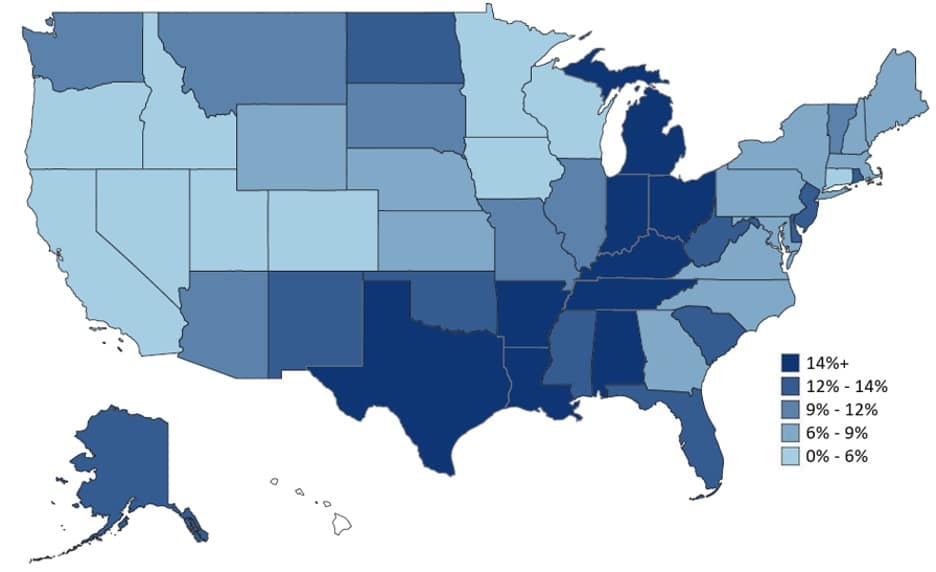
INRIX Research has released the latest study in an ongoing effort to provide insight into the far-ranging impacts of the coronavirus. COVID-19’s Impact on Freight provides policymakers, freight carriers, financial analysts, and the general public with insights to navigate the recovery from COVID-19. To better understand the implications of COVID-19, we looked at freight travel across the country, region by region, and state by state on a week to week basis.
Key highlights:
- Commercial truck travel is down 13 percent nationwide, while personal travel is down 46 percent;
- Regional differences in freight travel are dramatic – from six to 17 percent reduction (Western and Southern Gulf regions, respectively);
- Manufacturing and oil states have seen the largest drops, led by Michigan (-37%), Kentucky (-20%), and Texas (-20%);
- Freight-heavy corridors in urban areas have seen significant travel speed increases, reducing barriers to moving goods faster.
Since March, INRIX has reported on travel trends across the United States due to the COVID-19 outbreak, revealing the elimination of congestion, speed increases across America, consumer retail behavior, and trends in curb management across the country.
To ascertain the impact of COVID-19 on freight specifically, we looked at long-haul trucking data from across the United States beginning March 1. Although down from normal, freight movement in the U.S. has stayed fairly resilient – especially compared to passenger travel. Through April 17th, passenger travel has decreased nationwide by about 46 percent, while truck travel is down about 13 percent from normal.
The Decline in Freight Vehicle Miles Traveled by State

We also found that trucking was hit harder in different regions of the United States, likely a result of manufacturing slowdowns due to COVID. For example, while trucking in the “North Central” region is on-par with the country as a whole, states within the region are seeing large variations. Trucking in Michigan is down approximately 37 percent from normal, while Minnesota and Wisconsin are down just four percent.
The Southern Gulf region, on the other hand, has seen about a 17 percent drop in trucking – versus the national average of 13 percent, with 20 percent drops in both Kentucky and Texas. Despite these key oil and manufacturing states contending with a volatile market and COVID-19 responses, the fact that freight is moving at 83 percent of normal is remarkable and reveals the resiliency of these economics in some of the hardest-hit areas of the country.
Congestion, typically a pain-point for freight operators and drivers, has subsided, allowing the shipment of goods to move through urban areas unimpeded. INRIX used Trip Analytics to identify and analyze key freight corridors, finding real travel time savings for truckers. For example, travel times have improved more than 62 percent at 5:00 PM on Interstate 290 in Chicago, allowing freight movers to save time, reduce fuel costs, and make more timely deliveries.
States across the country are looking to cautiously reopen parts of the economy – and INRIX plans to analyze the data to provide government officials, businesses, and trucking industries key insights into how these changes relate to things on the ground.
To download our new study that identifies the impact of COVID-19 on the US’s freight & national supply chain, click here.




